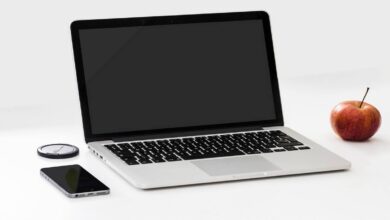
Macbooks are well-known for their durability. However, despite their toughness, even Macs’ can not last forever.
Over the years, you can notice how your computer’s speed slowly decreases. That can continue until using a Mac becomes almost impossible. Luckily, there is no need to think about buying a fresh one, which may cost you a bunch of money.
Most of the time, all you need is a little willingness and knowledge to make things fixed. So, if you want to know what can be done to make your Mac computer fast again as it once was, try to apply the following tips yourself.
Leave the mess behind
It is easy to notice that over time your computer becomes stuffed with a lot of files, leaving no free space on the hard drive. That can have a great impact on your system’s speed. It is because while your Mac is running, it continually creates temporary files, to perform the same actions faster. Having no space on disk makes this process complicated.
Luckily, there are apps like clean my mac, that can help you deal with such troubles. This application has several other useful functions to speed up your system work too. You can use it to clear all the invisible cache files.
Also, it can help you find out which apps use the most RAM and end them. Another function worth mentioning is a built-in security tool, to protect your computer against various malware that might critically slow down your Macbook or even steal private data.
Keep your desktop clean

If you ever noticed that your desktop suddenly becomes slow, that should make you concerned about how cluttered it is. The thing is, every icon on your desktop is a window that needs RAM to be displayed. So, if you already are lacking RAMs, the situation can be terrible.
To prevent this, always remember to keep a proper organization of your files, leaving only the most used and needed things on the desktop. To be sure you have left none hidden files there, just reach the desktop through its dedicated folder. There you should find all items located on the desktop at the current moment.
Reduce startup items
Usually, when you install a new application on your Mac computer, they have a default setting to startup during the system boot-up. During some time, the number of apps acting like this can get big. As a result, your Mac will start booting slower.
That happens because all these apps need your computer resources to start their processes, so it leaves fewer for the operating system to work. To avoid that, just go to Settings → Users & Groups → Current User → Login Items and select which apps you do not want to run at the system startup.
Make sure you are always up to date

Developers and software engineers are continually working to improve the operating system and applications you are using daily. That is necessary to make sure that there are no bugs or glitches left.
Updates can bring additional features that will make your user experience more satisfactory too. Also, with each update, developers try to hide any known breaches to prevent hackers from entering your system.
So, by updating your system and software, you are not only getting some performance improvements but making your system more secure. But there is one thing to know before updating. When in today’s world, everything is moving at such a fast pace, even updates may have missed errors. Having that in mind, it would be better to do updates a few days after their release.
Do restarts regularly
If you wonder what you should do after finishing the work with your Mac, leave it to sleep or shut it down, the second choice is better. The reason most people just close the lid and put it to sleep mode is that it takes less time to boot later. But this way, you just fill up all the free space dedicated to swap files. It is a thing that Macs use as virtual memory in case a dedicated one is all used. As a result, your system gets slower.
So, to prevent this from happening, do regular restarts of your system to make sure it clears all the cache files and prepares the system for optimized performance.
Upgrade your hardware

If none of the previously mentioned methods worked out, there are still ways to speed up your system. But you will need to spend extra money for that. It will cost a little money, but be worth the price, especially if you plan to use your Mac for a couple more years.
Parts we are talking about are RAM and hard drive. If your system uses 4 GB of RAMs at the moment, that is not enough for today’s standards. Because applications get updated all the time and receive extra features, the demand for memory is also increasing. So, grab an extra 4 GB or more, to be safe for the future.
Another thing is the hard drive. If your system uses the older version, known as HDD, swap it for an SSD without even thinking. It will amaze you at how far speeds have increased compared to HDD and how quickly your computer can be.



